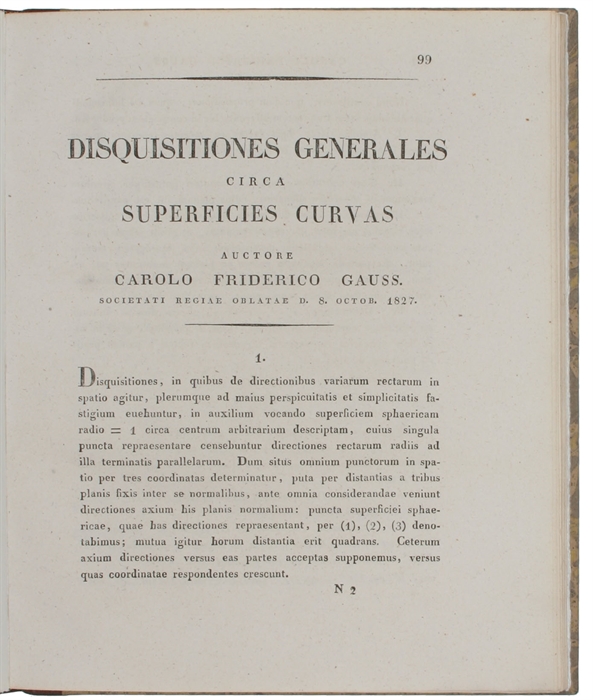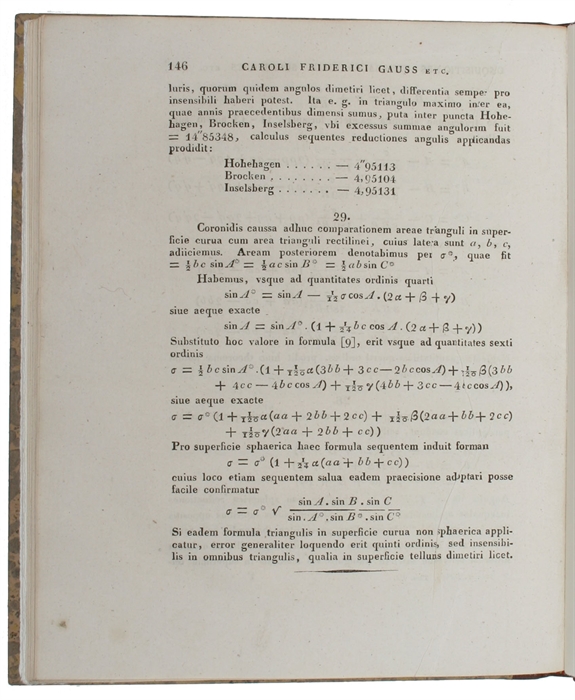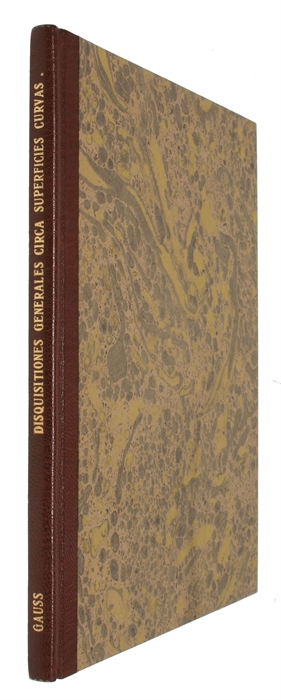FOUNDATION OF MODERN GEOMETRY
GAUSS, CARL FRIEDRICH.
Disquisitiones generales circa superficies curvas. (General Investigations of Curved Surfaces).
Göttingen, Dieterich, 1828. Small 4to. Extracted from: 'Commentationes Societatis Regiae Scientiarum Gottingensis', Volume 6, pp.99-146. 4to. Modern half morocco with gilt spine lettering. Fine and clean throughout.
First edition of the work which inspired one of the greatest breakthroughs in geometry since Euclid.
Euler established the theory of surfaces in his 'Recherches sur la courbure des surfaces', 1767. But Euler's treatment of surfaces is not invariant under a natural notion of isometry; with his notion of curvature, for example, the plane and cylinder have different curvatures, although one surface can be bent into the other without stretching or contracting. Such two surfaces are locally alike and one would naturally demand that geometry on these two isometric surfaces are the same. Another way of viewing this is to say that geometry on the surface depends on the geometry of the particular space, in which the surface is embedded.
In this work Gauss took a fundamentally different approach to the study of surfaces; in contrast to Euler he represented the points of a surface in terms of two external parameters. Gauss then derived his own notions of the fundamental quantities of surfaces, e.g. arc length, angle between curves, and curvature. The Gauss curvature is related to the Euler curvature, but possesses a fundamentally different property, namely that it is intrinsic, e.g. isometric surfaces have the same curvature at all points. Or, in other words: Geometry (in Gauss' notion) on the surface is independent of the particular geometry of the ambient space. This remarkable result is known as Gauss' "theorema egregium". With this work Gauss established a whole new (and more proper) theory of surfaces. In the paper Gauss derived several important theorems about the length, area, and angles of figures on surfaces. But the "theorema egregium" has deep roots in the foundation of geometry and was to initiate one of the greatest breakthroughs in geometry since Euclid. To Bernhard Riemann (a student of Gauss) this result suggested that a surface could be regarded as a space in itself with its own geometry, having its own notion of distance, angles, etc. independent of the geometry of some other space containing the surface. This idea became the corner stone of Riemann's famous 'Ueber die Hypothesen, welche der Geometrie zu Grunde liegen', 1867.
Norman 880.
Order-nr.: 34861



